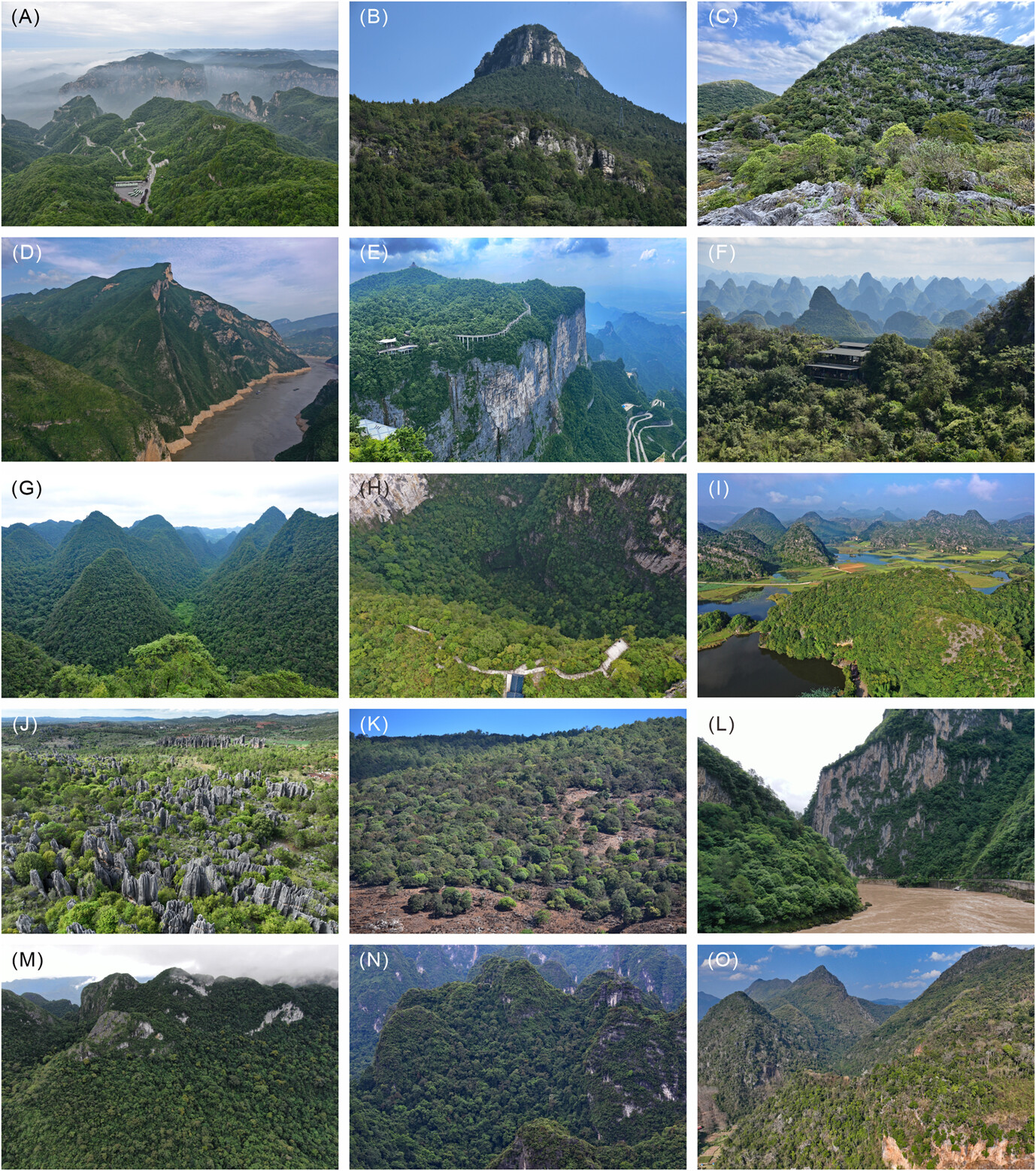China's karst region, known for its unique biodiversity, presents significant challenges in understanding the distribution patterns of woody plants due to its vast expanse and rugged terrain.
In a study published in Nordic Journal of Botany, Dr. HUANG Jian of Xishuangbanna Tropical Botanical Garden (XTBG) revealed unprecedented details about the floristic characteristics and regionalization of woody plants in China’s vast karst regions, shedding light on one of Earth’s most ecologically complex landscapes.
By integrating new field surveys with historical data, the researcher classified China’s karst woody flora into 2 kingdoms, 3 subkingdoms, 11 regions, and 20 subregions under the framework of the Floristic Regionalization of China. The study highlights the mixed origins of these plant communities, tracing their roots to ancient palaeofloras such as the Tethys Tertiary and Palaeotropic lineages. These findings underscore the karst regions’ role as a "Noah’s Ark" for preserving rare and endangered plant species.
Over ten years, researchers conducted extensive fieldwork to compile species composition data, overcoming historical gaps in nationwide understanding. Previous studies were largely confined to regional checklists or limited by outdated methods, often including non-limestone species. This new analysis focuses on woody plants, the cornerstone of forest ecosystems, to map dominant species, vegetation types, and floristic sources. Notably, the study identifies southwestern China—particularly Yunnan and Guangxi—as critical refuges for ancient plant lineages.
“By clarifying regional floristic boundaries and origins, we can better prioritize conservation efforts in areas facing habitat fragmentation and climate change,”said HUANG Jian.

Typical karst landscapes and vegetation in different regions of China。
Contact
HUANG Jian Ph.D
Xishuangbanna Tropical Botanical Garden
E-mail: huangjian@xtbg.ac.cn
Published: 28 April 2025

